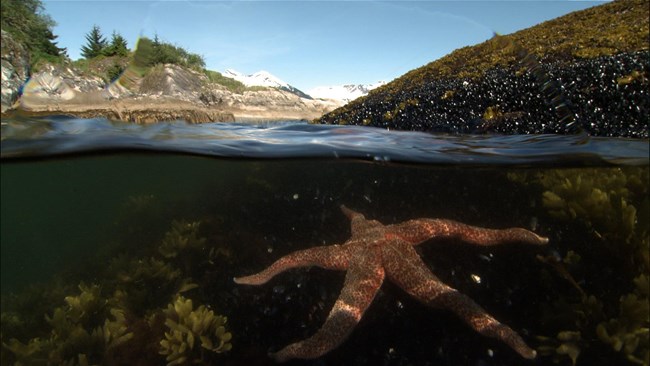Documents Open for Public ReviewOther Plans and ProjectsAn archive of completed projects as well as projects without documents open for comment may be found on the PEPC website. 
NPS Photo / S. Tevebaugh Backcountry and Wilderness Management PlanThe National Park Service (NPS) is nearing completion of its effort to develop a Backcountry and Wilderness Management Plan. The plan will explore different ways to manage the park's backcountry to enhance the stewardship of Glacier Bay National Park's more than 2.6 million acres of designated Wilderness. The planning process began in 2019 and has included several opportunities for public outreach and comment. Learn more about the draft plan and submit your comments through the NPS Planning, Environment & Public Comment (PEPC) website here.
Marine Management PlanThe National Park Service (NPS) has approved a plan for managing the marine waters of Glacier Bay National Park. The decision document, in the form of a Finding of No Significant Impact (FONSI), was signed by Sarah Creachbaum, the NPS Alaska Regional Director, on February 3, 2023, and is available on the NPS Planning, Environment & Public Comment page: https://go.nps.gov/GBwaters The final plan will provide long-term direction and an integrated framework for marine stewardship, including continued vessel management for balanced access to Glacier Bay with targeted refinements to a framework initially set in 1979 and comprehensively updated in 2003. Park Superintendent Philip Hooge thanks all those who reviewed the draft plan and Environmental Assessment and submitted comments:
For the 2023 permit season, private boater permit processes will remain largely the same. Next fall the park will publish detailed information for 2024 permit season private boater lotteries on its permitting web page. The public is encouraged to check for periodic updates on our marine management webpage as the conceptual plans are refined for implementation. Even if the formal public review period for a planning document is closed, you can still offer your thoughts to us. We welcome your voice at any stage of the planning process. Planning for Our ParksThe National Park Service (NPS) plans for one purpose - to ensure that the decisions it makes will be carried out as effectively and efficiently as possible. The National Park Service prepares a variety of planning and environmental documents to help guide management of park resources. Planning provides methods and tools for resolving issues in ways that minimize conflicts and promotes mutually beneficial solutions -solutions that articulate how public enjoyment of the parks can be part of a strategy for ensuring that resources are protected unimpaired for future generations. Glacier Bay Planning Portfolio Park managers are guided by a variety of plans and studies, covering many topics. The totality of a park's plans is referred to as the Portfolio of Management Plans (portfolio). The portfolio is a dynamic compilation of planning guidance in which certain planning elements are removed and updated, or new elements added as needed. For Alaska, the portfolio consists of basic descriptions of a park's purpose, such as the Foundation Statement, NPS Alaska Regional Management Guidelines, Land Protection Plans, and Park Atlas; comprehensive plans, such as a General Management Plan and Master Plan; implementation plans, such as a site management plan, transportation plan and fire management plan; and strategic program plans, such as a long-range interpretive plan. The above lists are examples of the types of planning elements that could be found in a portfolio.Each park's portfolio of management plans will be composed of a unique set of plans designed specifically to help manage that particular unit. Explore the Glacier Bay Portfolio of Management Plans NEPA/ComplianceNEPA is the acronym for the National Environmental Policy Act. This act, passed in 1969, laid the foundation for environmental protection in the United States by setting policy goals for the federal government. Two major requirements of the act are that agencies analyze the environmental impacts of federal actions and engage the public in the decision-making process.The first step in the park planning process involves defining the proposed action. For most projects, the next step in the planning process is to determine the appropriate pathway for NEPA documentation based on the proposed action's level of impact to the environment. If the proposed action will not have significant impacts to the environment, the park utilizes a categorical exclusion. If it is unclear whether or not the proposed action will have significant environmental impacts, the park prepares an environmental assessment (EA). If the proposed action will have significant environmental impacts, the park prepares an environmental impact statement (EIS). |
Last updated: February 16, 2023
